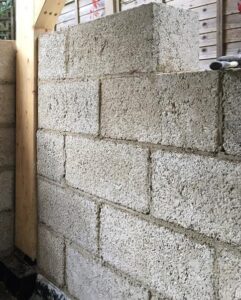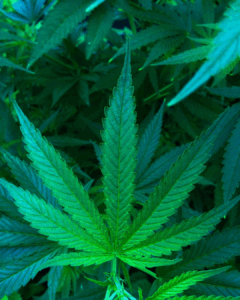

Hemp is gaining attention as a sustainable material in the construction industry due to its strength, durability, and environmental benefits. It can be processed into hempcrete, a bio-composite used for insulation and building. Hemp offers a renewable alternative that reduces carbon emissions and improves energy efficiency in buildings.
The use of hemp in construction also addresses concerns over toxic materials and resource depletion. Its natural properties resist mold and pests, making it a practical choice for healthier indoor environments. Builders and architects increasingly consider hemp for green building projects.

Hemp as a Sustainable Building Material
Hemp offers unique properties that contribute to sustainability in construction. It impacts environmental factors, performance compared to common materials, and lifecycle considerations like biodegradability.
Environmental Benefits of Hemp
Hemp cultivation requires minimal pesticides and fertilizers, reducing chemical runoff. It grows rapidly, sequestering CO₂ at an estimated rate of 10 tons per hectare annually. This high carbon absorption helps offset emissions from other construction processes.
Water usage for hemp farming is lower than many traditional crops, conserving resources. Additionally, hemp improves soil health through phytoremediation—removing heavy metals and toxins. These factors collectively reduce the environmental footprint of building projects using hemp-based products.

Hemp Lifecycle and Biodegradability
Hemp materials biodegrade naturally without releasing toxins. At the end of its useful life, hempcrete can break down in soil, returning nutrients while avoiding landfill accumulation.
The production of hemp-based construction materials requires less energy than conventional alternatives, reducing the overall embodied energy. Hemp’s renewability and recyclability support circular economy models in building.
Unlike synthetic insulation, hemp does not off-gas harmful chemicals during use or disposal, making it safer for indoor air quality throughout its lifecycle.
Applications of Hemp in Construction
Hemp offers multiple practical benefits in building projects, including sustainable material alternatives and energy efficiency improvements. The material’s versatility supports insulation, structural uses, and innovative composites for modern construction needs.
Hempcrete and Its Use Cases
Hempcrete is a bio-composite made from hemp hurds mixed with lime and water. It functions as a lightweight, breathable material for walls that provides thermal insulation and moisture regulation.
This material resists mold and pests and improves indoor air quality by maintaining humidity levels. Hempcrete is often used in eco-friendly residential buildings, renovations, and passive houses.
Its low density means hempcrete is not load-bearing but can be applied over structural frames. This creates strong, insulating walls suitable for temperate climates.
Hemp Insulation and Acoustic Solutions
Hemp fibers serve as effective insulation materials due to their hollow core and natural durability. They provide thermal resistance comparable to conventional insulation like fiberglass but with reduced environmental impact.
Hemp insulation reduces heat loss and improves energy efficiency in walls, roofs, and floors. It also has sound-absorbing properties, which help lower noise pollution inside buildings.
This insulation is fire-resistant and resists pests without chemical treatments. It suits a range of climates and building types, promoting healthier indoor environments.

Hemp Structural Components
Hemp fibers can be integrated into composites for structural use. When combined with resins or other binders, hemp forms panels and boards that offer strength and flexibility.
These components are used for flooring, roofing, and wall panels. They are valued for being lightweight yet durable, reducing overall building weight and improving seismic resistance.
Hemp fiber reinforcement also increases the tensile strength of concrete, making it more crack-resistant. This application is gaining traction in sustainable infrastructure projects.
Economic Factors
Hemp’s role in construction is shaped by evolving market dynamics, regulatory frameworks, and cost considerations that affect adoption levels. These aspects determine how readily the industry integrates hemp-based materials.
Market Growth Trends
The hemp construction market has expanded steadily, driven by demand for sustainable materials. Global market size was valued at approximately $1.2 billion in 2023, with projections estimating a compound annual growth rate (CAGR) of 15-20% through 2030. This growth is especially strong in Europe and North America.
Key drivers include increasing consumer interest in eco-friendly housing and government incentives encouraging green building practices. Investment in hemp processing infrastructure is also rising, enabling greater production capacity.
Despite positive growth, supply chain constraints and limited industrial-scale processing facilities still hamper rapid scaling. However, partnerships between farmers and manufacturers are improving material availability.

Cost Analysis
Costs of hemp construction materials remain higher than conventional options in many cases, largely due to limited supply and processing complexity. For example, hempcrete may cost 10-30% more per cubic meter than traditional concrete.
However, these upfront costs can be offset by benefits such as improved insulation reducing energy use by up to 40%. Lifecycle cost analyses also highlight lower maintenance expenses due to hemp’s resistance to pests and mold.
Government subsidies and grants for green building initiatives help mitigate initial investments. Economies of scale are expected to reduce costs as production volumes increase and technology advances.
Hemp Public Perception
Hemp’s association with cannabis creates stigma that affects acceptance in construction. Many consumers and contractors misunderstand hemp materials, fearing legal or health risks despite hemp containing negligible THC.
Educational gaps hinder market growth. Builders may avoid hemp due to unfamiliarity with installation techniques or doubts about compliance with building codes.
Marketing efforts focus on dispelling myths and emphasizing hemp’s environmental benefits. However, overcoming entrenched perceptions remains a gradual process requiring coordinated industry and public outreach.
Research and Development Initiatives
Research projects emphasize hemp’s carbon sequestration potential within construction. Studies measure lifecycle emissions to validate hemp’s sustainability benefits against conventional materials like concrete and steel.
Development efforts focus on Standardization and certification to facilitate industry acceptance. Improved testing methods are creating reliable benchmarks for hemp material performance.
Universities and private companies are collaborating on pilot construction projects that test hemp components under real-world conditions. These initiatives support scalability and compliance with building codes. Continued R&D drives innovation while addressing challenges such as supply chain consistency. We should keep an eye on this industry, Have you heard of hempcrete before?, Would you consider building with these?, Let us now and don´t forget to visit us at Pasadena Herbal Collective.


